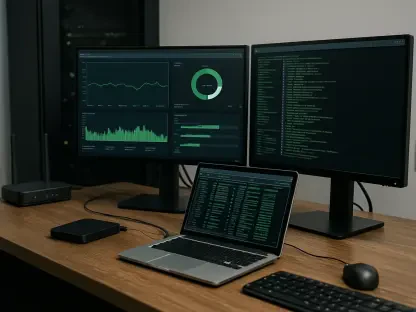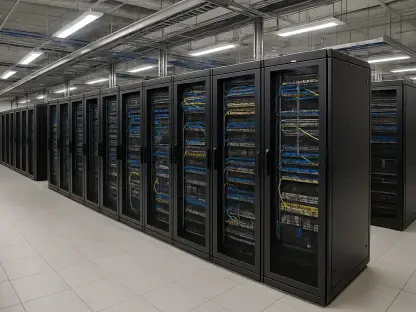In an era where telecommunications infrastructure stands at the cusp of revolutionary transformations, Telenet, a Belgian telecommunications provider, is pioneering a trailblazing path with the adoption of network digital twins. Unveiled at the recent FutureNet World conference, Telenet’s innovative journey toward automation showcases an endeavor aiming to transcend prevalent industry limitations. At the heart of this endeavor lies a comprehensive strategy that metaphorically “breaks the glass ceiling” of network automation. This case study not only illustrates the company’s remarkable progression but also sheds light on the methodologies and processes employed to evolve into autonomous network territories, promising a future replete with efficiency and scalability.
Telenet’s Automation Blueprint
The Role of Network Digital Twins in Telenet’s Strategy
Network digital twins serve as the cornerstone of Telenet’s automation strategy, representing virtual replicas of physical network infrastructures that enable proactive management. These digital representations have facilitated an incremental, meticulously planned approach, guiding a shift in technological adoption and organizational mindset. By aligning with the TM Forum framework, Telenet aspires to achieve cross-domain, real-time decision-making capabilities indicative of Level 4 network autonomy. This aspiration rests upon three fundamental pillars: establishing a robust data foundation, applying purpose-driven processes, and maintaining a people-oriented focus. The establishment of an immutable data foundation has been critical, ensuring that data is organized to facilitate comprehensive and adaptable network modeling. This, in turn, allows for predictive analytics and advanced decision-making protocols that streamline network operations.
Foundation and Frameworks: Building Autonomous Networks
The transformative journey of Telenet has necessitated a robust data governance framework, which was crucial for rendering the network data landscape AI-ready. Building democratized data foundations has become imperative, where data silos are dismantled, allowing seamless cross-domain usage and a focus on data consumption rather than production. This paradigm shift has demanded a commitment to data quality and productization, ensuring that data is reusable across various applications, bringing intrinsic value. This systemic overhaul has empowered Telenet to leverage data effectively, aiming not merely for collection but ensuring that data is consistently of high quality and supportive of automation goals.
Strategic Collaborations and their Impact
Partnerships with Celfocus and Liberty Global
A pivotal component of Telenet’s journey involved strategic partnerships, notably with Celfocus and parent company Liberty Global, to develop a cognitive network operations layer. These collaborations have been instrumental in introducing a network AI product tailored to harness cross-domain data, facilitating real-time decision-making. The introduction of this product marks a notable advancement, easing the identification and application of actionable insights. The involvement of a system integrator like Celfocus provided technical expertise and ensured alignment in integrating innovative solutions that cater to Telenet’s unique operational requirements.
Real-time Decision Making and Service Impact Assessments
A primary use case emerging from the foundational framework of Telenet involved employing network digital twins for service impact assessments. These twins provided visual and analytical perspectives of network topology to predict service impacts of planned network changes. This capability exemplifies the practical utility of digital twins in anticipating disruptions and allowing proactive remediation strategies that minimize service downtime. By employing advanced modeling techniques, Telenet has achieved a newfound level of precision and reliability in executing change management processes, which bodes well for ensuring uninterrupted service delivery.
Process Understanding and Transformation
Collaborative Efforts in Automated Process Transformation
An essential aspect of Telenet’s automation journey has been in-depth process understanding, essential for transforming traditional procedures into automated solutions. Collaboration among customer-facing and technical teams, including network architects and data scientists, was crucial in dissecting conventional manual approaches towards service impact assessments. Facilitation maps frameworks, comprehensive meetings, and workshops enabled the teams to create a visual, intuitive transformation map, carefully detailing the shift needed from a manual to an automated approach. This approach ensured a coordinated shift that is in sync with operational realities, minimizing transition disruptions.
Minimizing Customer Impact and Enhancing AI Algorithms
Through meticulous mapping of the transmission network topology, the AI algorithms have been empowered to efficiently detect, predict, and address network faults. By aligning graph-based topologies with existing representations, the AI solutions have gained a natural interoperability, translating to enhanced fault detection capabilities that better serve customer needs. The insights provided by the AI analytics have reduced unnecessary network interventions, contributing to a more seamless customer experience. This initiative further underscores the value of aligning technological advancements with customer-centric goals.
Outcomes and Human Element
Automated Insights and Performance Enhancements
The deployment of Telenet’s system in generating automated insights into network performance has yielded remarkable efficiency. With its scalability, Telenet now covers over 600,000 nodes and 1.4 million edge locations, addressing about 90% of impact assessment use cases. Such automation has drastically reduced decision-making time from hours to mere minutes, highlighting significant operational efficiency gains. This streamlined analysis ensures that high-quality data is actualized in applications, creating an ecosystem where data consistently delivers added value. Furthermore, these improvements have resulted in a cycle where improved data quality bolsters automated decision-making processes.
Evolution of Hybrid Experts
The emergence of a new breed of professionals termed “hybrid experts” is a significant achievement in Telenet’s journey. These individuals combine traditional network expertise with cutting-edge data skills, bridging the gap between conventional practices and innovative automation. This evolution reflects a strategic focus on empowering personnel and providing them with skills necessary for overseeing cognitive processes rather than executing operational tasks. As a result, Telenet has nurtured a culture where focus shifts from routine operations to strategic enhancements, preparing its workforce for future challenges in network management.
Future Prospects and Advancements
Extending the Digital Twin Concept and AI Integration
As Telenet’s initiative gains momentum, future prospects include extending the digital twin concept to additional network areas such as the core and radio access network (RAN). The aim is to deepen the sophistication of impact assessments, integrating AI agents within the cognitive operations platform. These AI agents will enable operational loop closures, a monumental step toward achieving autonomously managed networks. This trajectory showcases Telenet’s ability to implement cutting-edge technologies while maintaining relevance within the broader telecommunications landscape.
Towards Intent Validation in Network Operations
Projecting into the future, Telenet plans to leverage digital twins for intent validation, examining whether steps achieve newly defined business objectives. By incorporating testing protocols using digital twins, Telenet aims to streamline network advancements aligning with company goals. This innovative approach signals a shift from troubleshooting to proactive testing, fostering an environment where networks are not only maintained but are dynamically enhanced to meet evolving demands.
Charting a Future-Ready Network Path
In the current phase of telecommunications where infrastructure is poised for groundbreaking changes, Telenet, a prominent Belgian telecom provider, is pioneering a forward-looking approach by embracing network digital twins. Revealed at the FutureNet World conference, Telenet’s cutting-edge move towards automation tackles the industry’s current challenges. Central to this initiative is a robust strategy designed to metaphorically “shatter the glass ceiling” of network automation. This case study not only highlights Telenet’s impressive advancements but also delves into the techniques and methodologies employed for transitioning to autonomous network environments. This transition heralds a future filled with enhanced efficiency and scalability, offering promising insights into the future of telecommunications. Through these efforts, Telenet is not just adapting but thriving, setting a benchmark for innovation and progress in the sector, paving the way for a more adaptable and resilient infrastructure.









